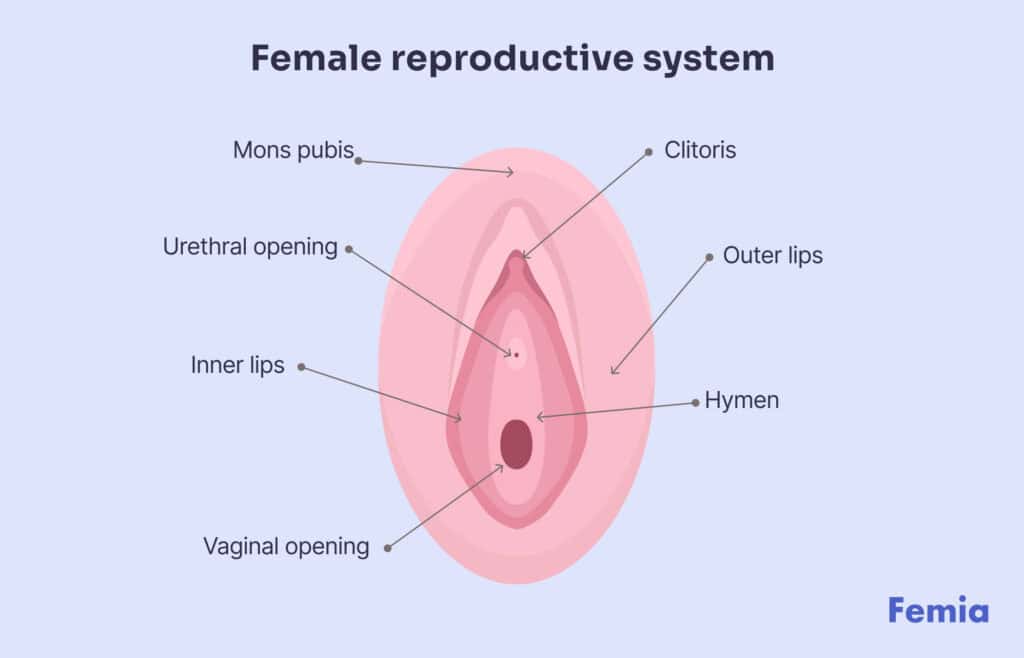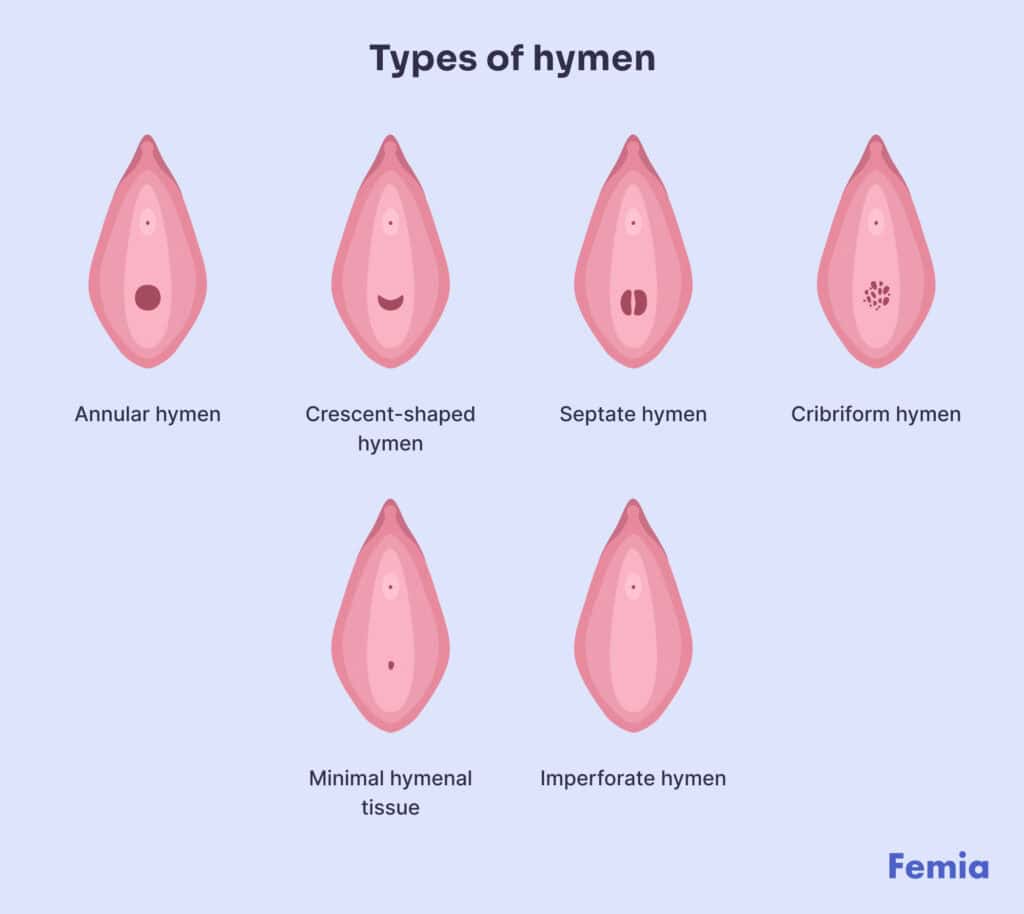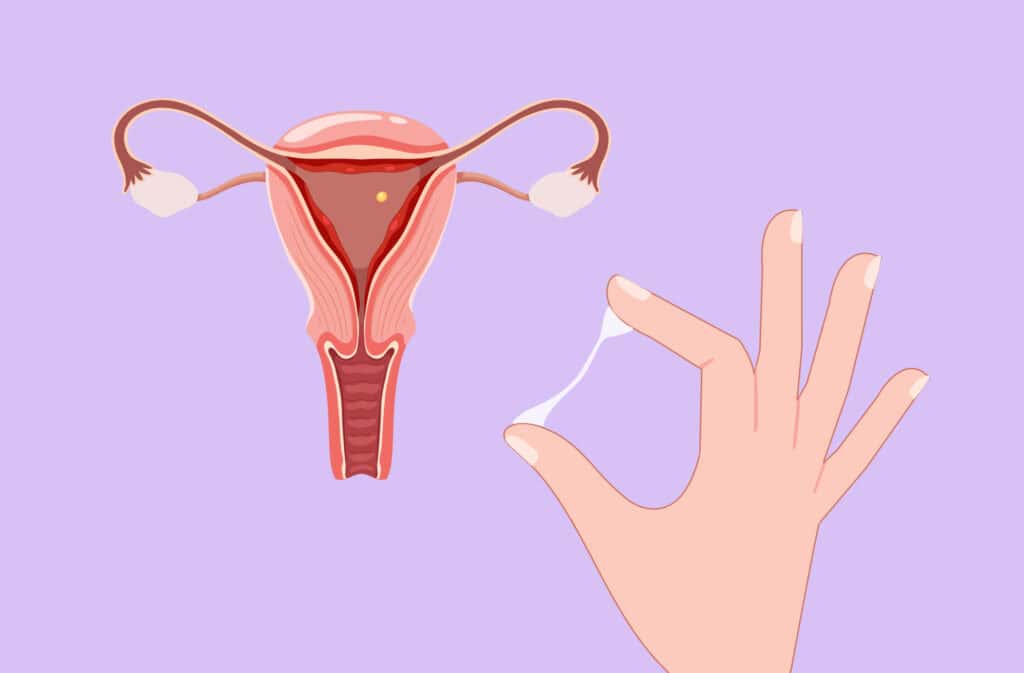Femia > Health Library > Your cycle > Health > Hymen breakage signs: Understanding the anatomy and debunking myths
Hymen breakage signs: Understanding the anatomy and debunking myths

- Updated Feb 11, 2025
- Published
CRAFTED BY HUMAN
Crafted by human At Femia, we provide accurate and up-to-date information at every stage of your journey, from trying to conceive, pregnancy and postnatal support. All content is created by a real person based on in-depth research and own professional experience. Femia ensures that you will receive expert advice, strict accuracy and a personalized approach from our authors/medical experts. Learn more about our editorial policy.
FACT CHECKED
Fact checked At Femia Health, we maintain the highest standards of editorial excellence in delivering content focused on helping you conceive, guiding you through pregnancy, and supporting you postpartum. Explore our content review principles to learn how we ensure the accuracy and quality of our health and lifestyle tips for every stage of your journey.

Created with Hector Chapa, MD, FACOG, Clinical associate professor, Obstetrics and Gynecology Texas A&M University, College of Medicine in Bryan-College Station, USA
- The hymen is a thin, flexible membrane located at the entrance of the vaginal canal. It can stretch or tear naturally through actions like exercise, tampon use, or sexual activity.
- Signs of hymen breakage may include mild discomfort or light bleeding, but its condition is not a reliable indicator of virginity. Everyone’s hymen is unique, and its state doesn’t define your experiences and certainly not your worth.
The hymen is a thin, elastic membrane located near the vaginal opening. Many people think that it can show whether someone has had sex. However, the way your hymen looks or feels can change or stretch for many reasons.
If you are here to learn what might happen the first time you have sex or just wondering how to know if your hymen is still attached, we’ve got you covered. This article will discuss the anatomy of the hymen, the signs of hymen breakage, and the common myths surrounding the hymen.
Femia helps you understand your symptoms and when to take action
What is the hymen?
If you are preparing to enter the world of sex, you might be confused about the terminology being used. What is a hymen, really?
The hymen is a thin, elastic membrane guarding the opening of your vagina.
Regardless of what you might have heard, the hymen doesn’t form a complete barrier at the entrance of the vagina. How would the menstrual blood come out? The hymen usually has an opening in the middle. Its shape, size, and thickness are unique to you.
Over time, your hymen can also break or change its shape due to non-sexual activities such as exercise, riding a bike, or using tampons. In other words – your first-time sex might have nothing to do with your hymen breaking.
👉Find out more: Types of vibrators: A beginner’s guide to choosing the best one for you
Where is the hymen located?
You may be exploring your body and wondering “Where is the hymen located?” Let’s discuss some basic hymen anatomy.
The hymen is seated at the entrance of the vaginal canal, just inside the vaginal opening. It lies between the labia minora and the vaginal canal itself. Anatomically, it forms a border around the vaginal opening,
In some cases, the hymenal tissue can extend slightly into the vaginal canal. Importantly, the hymen does not block the vaginal canal entirely but typically has one or more natural openings to allow the menstrual blood and other vaginal secretions to pass.

Healthy normal hymen: What it looks like
What does a hymen look like? It is generally a thin, elastic membrane that looks pinkish and soft. A healthy normal hymen can vary significantly in shape, size, and appearance. Some common shapes include:
- Annular hymen. This type of hymen has a circular, ring-like opening in the middle.
- Crescent-shaped hymen. This is one of the most common forms, where the opening is wide or“moon-like.”
- Microperforate or cribriform hymen. Featuring one or multiple tiny openings in the tissue.
- Septate hymen. This shape of a hymen is marked by a band of extra tissue dividing the hymenal opening into two smaller sections.
- Minimal hymenal tissue. Some girls are born with very little hymenal tissue or none at all. This is completely normal and natural.
- Imperforate hymen. The hymen has no opening – trapping menstrual blood and secretions inside. Girls are usually born this way and need surgery to fix it. This may make the first period painful as the menstrual blood cannot easily escape from the vagina. This may look like a blueish bulge at the vaginal entrance.

Remember that there is no “right” or “wrong” way for a hymen to look. The appearance of your hymen isn’t necessarily indicative of your virginity, sexual history, or your overall health.
Hymen breakage: What you need to know
Hymens are notorious for causing a whole lot of misunderstanding. When you have sex for the first time, it may not pop like a bubble and bleed like you are on your period. Some women feel slight discomfort or pain during initial penetration, while others feel nothing at all.
Remember that the hymen is a thin, elastic tissue that can stretch or tear over time due to various activities such as exercise, riding a bike, or inserting a tampon. Most women don’t even notice their hymen breaking when it’s not part of a sexual experience.
So, how do you know if your hymen is still there? You might be looking for info on how to check your hymen at home. For most girls, it’s difficult to tell just by looking or touching the area. Some women are born with little to no hymen tissue, and this is perfectly normal.
Femia helps you understand your symptoms and when to take action
Hymen breakage signs
When the hymen breaking occurs, it can present with different signs – or none at all. Every woman’s experience is unique. Here are some common hymen breakage signs to look for:
- Mild discomfort or slight pain. Some girls may feel a brief discomfort or pain at the entrance of the vagina, especially during first-time sex or tampon insertion. It might feel like stinging, stretching, burning, pressure, or tightness.
- Light bleeding. When you think of losing your virginity, you might expect some sort of bloodshed. But, tearing your hymenal tissue may come with just minimal spotting or bleeding. This usually only lasts a little while and stops on its own.
- Temporary soreness. When your hymen breaks, you might feel a temporary tenderness around the vaginal opening for a short time.
- No symptoms. Probably the best-case scenario. Many women see no visible signs or symptoms when their hymen stretches or tears, as this can happen naturally over time.
👉Find out more: Do you gain weight on your period? Causes and tips for managing fluctuations
Hymen myths and misconceptions
The topic of female sexuality has been a subject of stigma in many times and places in history. The hymen, mostly thought of as a sign of virginity, has been entangled in various myths. Let’s fact-check the biggest misconceptions about hymens.
Myth: The hymen is a solid barrier that breaks during first-time sexual intercourse.
Fact: The hymen is a thin, elastic tissue with one or more natural openings. It doesn’t “break” like a seal but rather stretches or tears over time due to various activities, such as exercise, or tampon use.
Myth: A person’s virginity can be determined by examining the hymen.
Fact: The condition of the hymen is not a reliable indicator of virginity. Some people are born with little to no hymenal tissue, while others may have a hymen that remains intact despite sexual activity. Virginity is a personal and cultural concept, not a physical one.
Myth: If there are signs of hymen breakage, it must be due to sexual activity.
Fact: The hymen can naturally stretch or tear from non-sexual activities. If you are a parent concerned about how to tell if your child’s hymen is broken, it’s important to understand that hymenal changes are natural and they are not necessarily linked to any specific event or behavior.
Myth: Hymen breakage is always painful or accompanied by bleeding.
Fact: For many girls, hymenal stretching or tearing occurs without pain or bleeding. This varies widely among women and is influenced by factors such as the hymen’s elasticity and the type of activity.
When to see a doctor
First-time sex, hymen breakage, and caring for your reproductive health can be pretty nerve-wracking at first. If you’re feeling concerned or unsure about anything related to your reproductive health, it’s always a good idea to reach out to a trusted healthcare provider.
Here are some reasons to see a doctor:
- You are bleeding heavily. If you experience bleeding that seems unusual or much heavier than expected, it’s worth getting it checked out to rule out any issues.
- The pain doesn’t go away. If you’re experiencing ongoing pain or discomfort in your vagina, it’s important to talk to a healthcare provider to make sure everything is okay.
- You are experiencing trouble with sex or tampons. If using tampons or being sexually active causes a lot of pain or discomfort, it’s a good idea to speak with a trusted healthcare provider for advice.
- You are just worried about your hymen. If you’re concerned about how your hymen looks or feels, a trusted healthcare provider can help explain what’s normal and what might need attention.
It’s your healthcare provider’s job not to be judgemental. They are there to offer support and help you understand what’s going on with your body. Don’t hesitate to reach out if you need guidance or have concerns.
Questions from the Femia community
Can I tell if my hymen is intact by how it looks?
Not easily. The appearance of your hymen doesn’t always show whether it’s intact or not. The hymen can look different depending on your age, physical activities, and even anatomy variations. Plus, just because the hymen might appear intact doesn’t mean it hasn’t been stretched through activities like exercise or tampon use. There’s no clear visual indicator of a “broken” or “intact” hymen, and it’s really not something you should feel pressured to figure out based on appearance alone.
What if my hymen doesn’t tear during sex?
This is completely normal and nothing to worry about! Every person’s hymen is different, and for some, it may stretch rather than tear during sex. This doesn’t mean anything is wrong with your body or your sexual experiences. The hymen isn’t a rigid barrier and it can just stretch during penetration. So, if your hymen doesn’t tear, that’s perfectly okay and doesn’t impact your health in any way.
Is hymen reconstruction surgery safe?
Hymenoplasty, or hymen reconstruction surgery, is a controversial procedure that offers no real health benefits. It’s often performed for cultural or personal reasons, but medically speaking, there is no need to alter the hymen for your physical health. Before considering this procedure, it’s important to consult with a trusted healthcare provider to understand the potential risks, including infection or complications.
Does hymen breakage hurt?
For some women, hymen breakage may cause mild discomfort or a little pain, but not everyone experiences this. If there is any pain, it’s usually brief and can feel like a slight soreness or pressure. Some girls don’t feel anything at all when their hymen stretches or tears. If you do experience pain, it’s always good to listen to your body and speak with a healthcare provider if you have concerns.
The bottom line
The hymen is a thin, flexible membrane located at the entrance to the vaginal canal. Over time, it may naturally stretch or tear when you work out, ride a bike, put a tampon in, or have sex. The appearance and condition of your hymen are very personal, and there is no single “normal” or “ideal” hymen.
It’s important to understand that the state of the hymen is not a reliable indicator of sexual activity or identity and it should never be used to judge anyone’s experiences. If you have concerns about your hymen or vaginal health, don’t hesitate to talk with a trusted healthcare provider. Your health and well-being are what matter most.
References
- “Hymen: Overview, Function & Anatomy.” Cleveland Clinic, https://my.clevelandclinic.org/health/body/22718-hymen. Accessed 22 Jan. 2025.
- Moussaoui, Dehlia, et al. “Hymen and Virginity: What Every Paediatrician Should Know.” Journal of Paediatrics and Child Health, vol. 58, no. 3, Mar. 2022, pp. 382–87. PubMed Central, https://doi.org/10.1111/jpc.15887.
- “What Does It Mean to Lose Your Virginity?” Medical News Today, 22 Aug. 2019, https://www.medicalnewstoday.com/articles/326122.

Discover key signs your body is ready for pregnancy. Learn how to know if you’re fertile enough to get pregnant: physical indicators, medical tests, etc. Expert advice from Femia.

Learn about the luteal phase of the menstrual cycle and how it affects your body and mood. Explore helpful recommendations for well-being during this phase.

Missed period not pregnant? Here is a detailed guide about the possible reasons for missed or late periods without pregnancy and the steps to address the situation.
